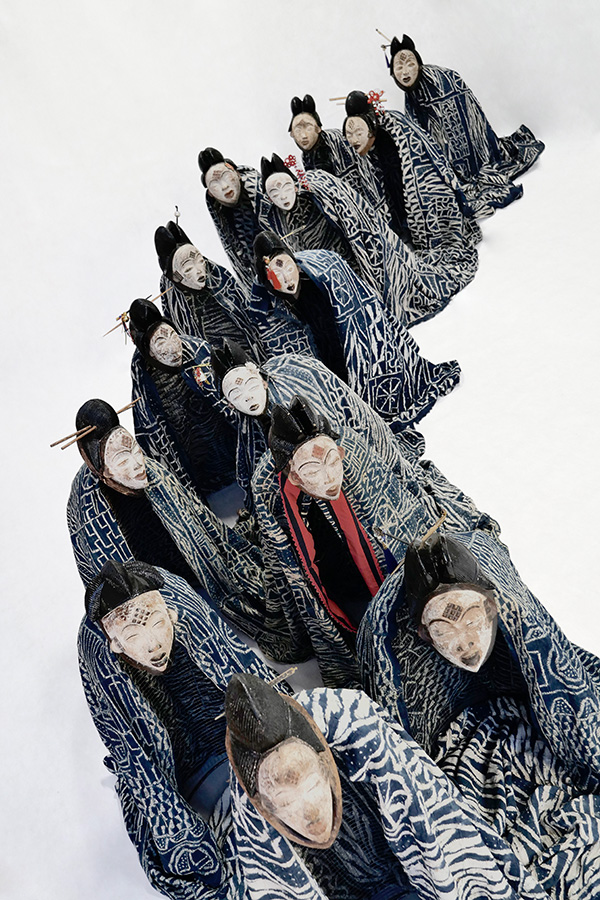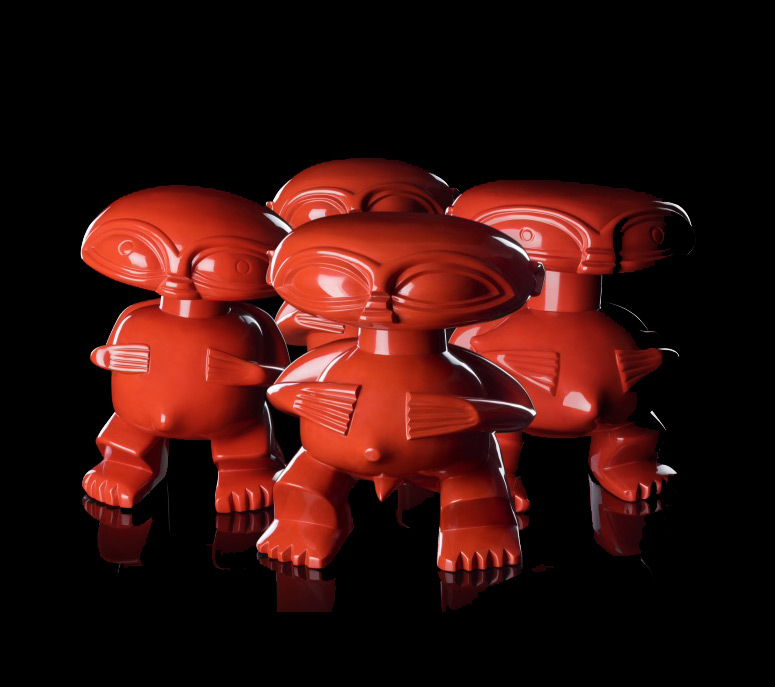Exhibition
Wafrica: In Search of a Third Aesthetic
Wednesday, May 8 to Saturday, June 8, 2024
Tokyo, Japan

About this Exhibition
This first solo exhibition in Japan by Serge Mouangue, Paris-based contemporary artist from Cameroon, presents exciting new visions of cultural affinities between Japan and Africa, a bold collection of sculptural and wearable expressions that transcend tradition toward a « Third Aesthetic. » Artworks include traditional African masks re-imagined in Japanese lacquer, kimonos crafted in African fabrics, and major figurative installations — as well as a number of pieces especially made for this exhibition.
In sum, this exhibition highlighting the inner affinity of Japanese and African cultures aims to give expression to the Marubeni Gallery concept of « a space where beauty old and new, East and West resonate. »
I hope this exhibition may encourage you to take a greater interest in African culture — and of course, I hope you simply enjoy the exhibition.

Kimono
Starting from 2008, kimonos were among the first works Serge created in a consciously Third Aesthetic mode. The combination of African textiles with contemporary Japanese styling looks as beautifully natural as it is practical.

Urushi Sculpture
The art of Japanese lacquer meets the power of African masks. The African wood carved masks were transformed into smooth forms through layers of lacquer with help of lacquer masters Okawara Masaru, Onishi Nagatoshi, Matsushima Sakurako.

Sculpture installation
His creative efforts evolve constantly, working simultaneously in art, design, sculpture and architecture. He then developed them into installation works.


Sketches
These sketches and designs of urushi sculptures and kimonos are a valuable source of Serge’s ideas.






















